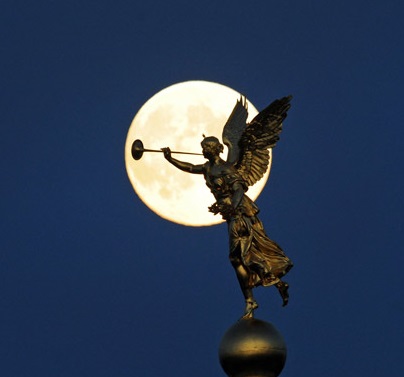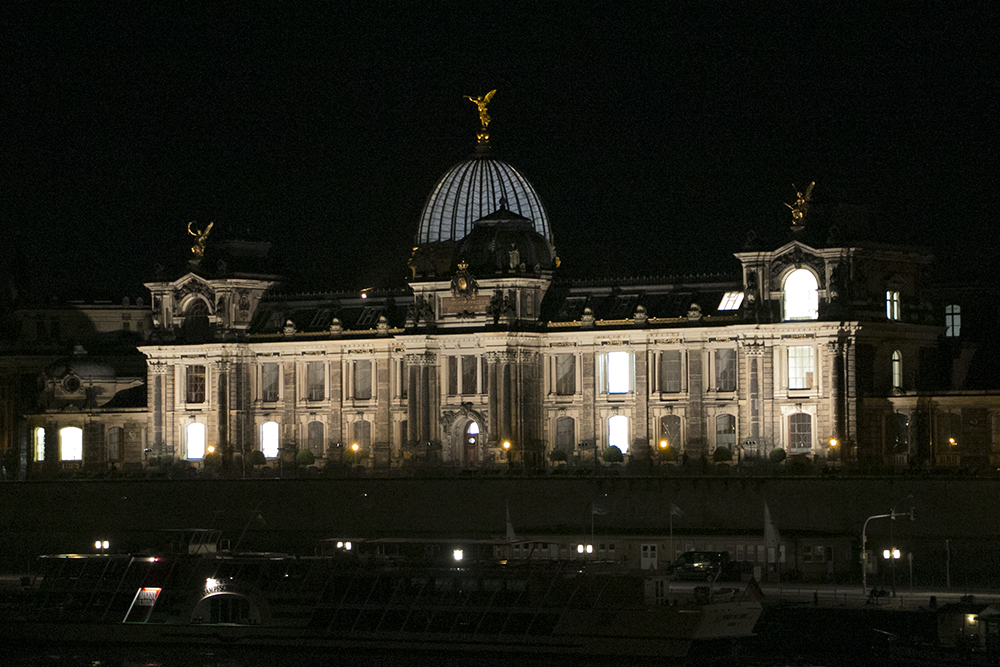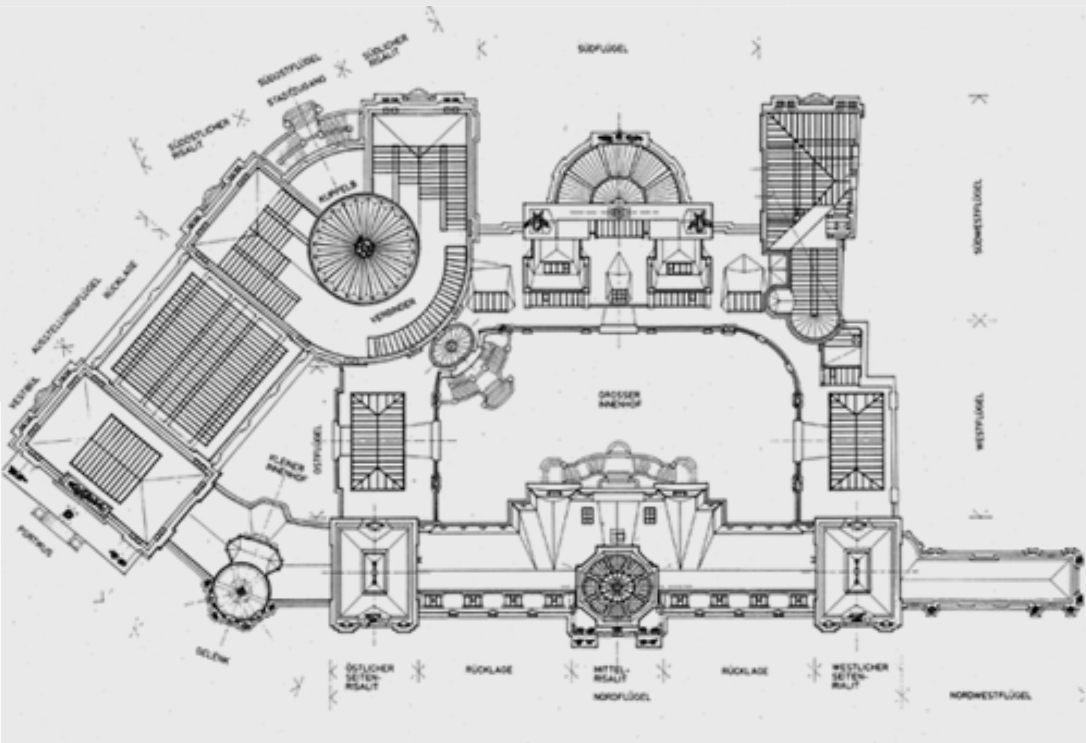Hochschule für Bildende Künste Dresden

{Elysium}
Description: The Dresden Academy of Fine Arts, often abbreviated HfBK Dresden or simply HfBK, is a vocational university of visual arts located in Dresden, Germany. The present institution is the product of a merger between the famous Dresden Art Academy, founded in 1764, the workplace and training ground of a number of influential European artists, and another well-established local art school, Hochschule für Werkkunst Dresden, after World War II.
Buildings: One of three buildings of today’s Dresden Academy of Fine Arts, the former Royal Academy of Arts, built in 1894, is located at a prominent position in town on Brühl's Terrace just next to the Frauenkirche. Since 1991, the building built by Constantin Lipsius on Brühl's Terrace between 1887 and 1894 – the glass dome of which is also known as Lemon Squeezer due to its form – has been heavily renovated and the parts that were destroyed during World War II were reconstructed. The studios for painting/graphic arts/sculpture/other artistic media, the graphic workshops, the rector's office and the exhibition rooms of the Academy, which house the annual graduation exhibitions of the graduates, are located on Brühl's Terrace.
On the side of the building facing the Elbe, the names of Pheidias, Iktinos, Praxiteles, Polykleitos, Lysippos, Erwin von Steinbach, Leonardo da Vinci, Michelangelo, Raphael and Dürer are inscribed on the wall and on the other side the motto "DEM VATERLAND ZU ZIER UND EHR" - "For the Honour and Adornment of the Fatherland" - is inscribed.
Apart from this magnificent building, the Academy owns the building for sculpture in Pfotenhauerstrasse, the studios and workshops of which were built in a big open-air exhibition ground in 1910. The workshops and studios for the courses of study of restoration, stage setting and costume design and the technical college degree course for theatre setting and costume design are located at Güntzstrasse in the buildings of the former Academy of Applied Arts.

History: In 1764, the “Allgemeine Kunst-Academie der Malerey, Bildhauer-Kunst, Kupferstecher- und Baukunst” (General Academy of Arts for Painting, Sculpture, Copperplate Engraving and Architecture) was founded by order of the Prince-Elector Frederick Christian. From 1768 to 1786 it was located in the Fürstenberg Palace. Its first director was the Frenchmen Charles Hutin. After the death of Hutin in 1776, Johann Eleazar Zeissig, referred to as Schenau, became alternating director of the Academy together with Giovanni Battista Casanova.
The Academy was the successor institution of the first “Zeichen- und Malerschule” (School for Drawing and Painters) founded in 1680. It was one of the oldest academies of art in the German-speaking area. In 1950 the Akademie der Bildenden Künste Dresden (Dresden Academy of Fine Arts) was merged with the Staatliche Hochschule für Werkkunst (Public Academy of Applied Art) – the successor of the Königlich Sächsische Kunstgewerbeschule (Royal Saxon School of Applied Art)– into today's "Hochschule für Bildende Künste Dresden” (Dresden Academy of Fine Arts).
Current Events: Today it is one of the academies of art in Germany that are especially attractive for a degree in art due to their unmistakable profile and optimum general conditions. The students are provided with spacious studies and well equipped workshops. The possibilities for exhibitions at the Academy are excellent: The Academy is provided with presentation space in the octagon below the glass dome referred to as “Lemon Squeezer” that is a landmark in the town, and in the two big adjacent exhibition rooms as well as the former library and the “Galerie Brühlsche Terrasse” (Brühl’s Terrace Gallery) which may be used by students from all degree courses and co-operation partners of the Academy.
The reorganisation of the Academy started in 1990 offered the chance for innovative and organic development of an academy with a long and successful history and distinct traditions. Well-known artists from the global world of art are teaching at the Academy. The different courses available for the study of painting and graphics as well as sculpture are very diverse. The classic cornerstones of artistic teaching at the Dresden Academy complemented and led to discourse and artistic exchange in the project class “New Media” and in a specialised course for comprehensive artistic works. The rules for study allow for changes within and between the specialized courses and for using the courses in the best possible way for one’s own artistic ambitions and projects.
